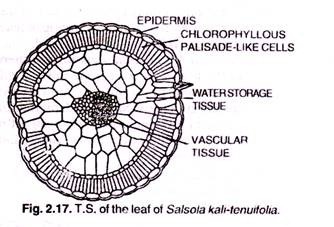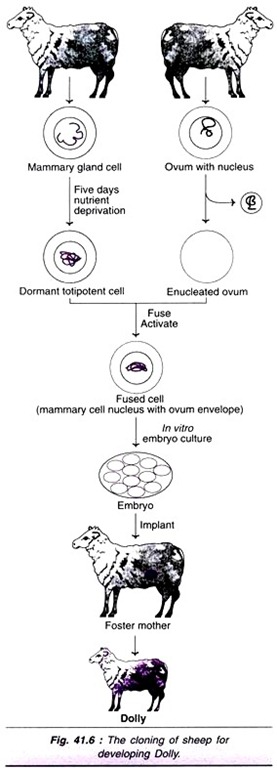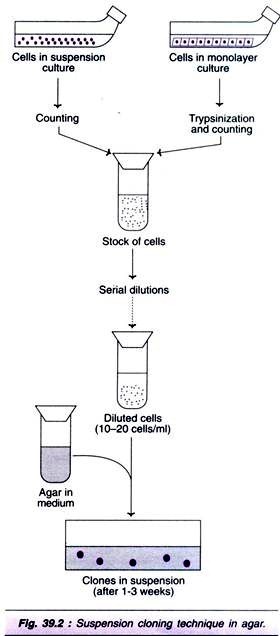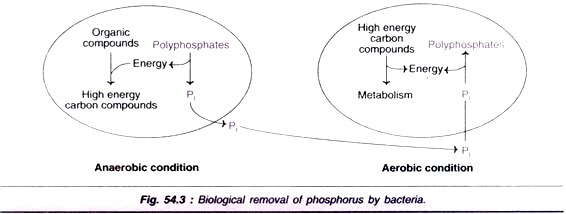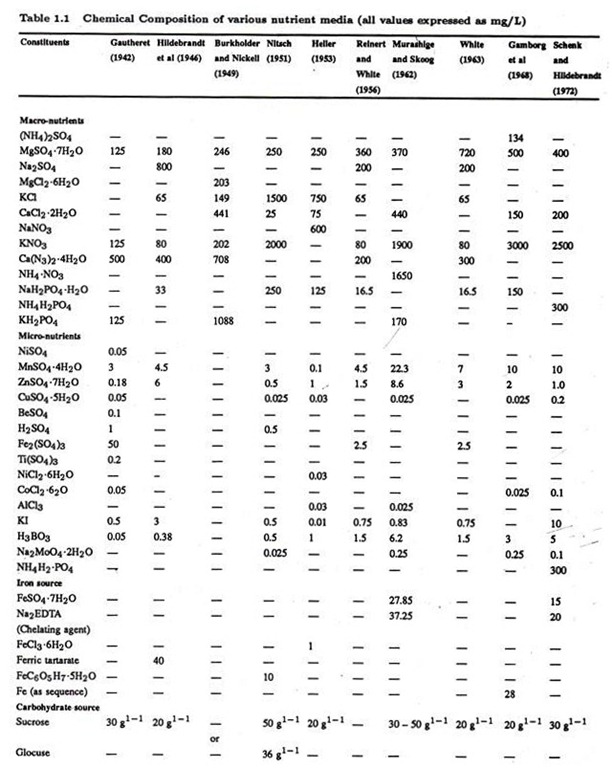Useful notes on Psychotropic and Psychedelic Habituating Drugs!
Contents
A. Psychotropic (Gk. psyche – mind, soul; trope = a turning) Drugs:
These are mood alternating drugs which affect behaviour and mental activity of a person.
Psychotropic drugs are classified into four major groups: tranquillizers, sedative and hypnotics, opiate narcotics and stimulants.
1. Tranquillizers:
They decrease tension and anxiety and produce a feeling of calmness without sedating and inducing sleep. Tranquillizers are of two types.
(i) Phenothiazines (Major Tanquillizers):
These are antipsychotic drugs which have good effect in all types of psychosis, specially schizophrenia. In a psychotic patient, these drugs reduce aggressiveness. Thought and behaviour are gradually normalised and anxiety is relieved. Examples are Chlorpromazine and Reserpine, etc.
(ii) Benzodiazepines (Minor Tanquillizers):
These drugs are used for anxiety and phobic conditions. Benzodiazepine is parent compound for the synthesis of many antianxiety drugs such as Diazepam (e.g., Valium, Calmpose), Flurazepam, Temazepam, Triazolam and Midazolam, Oxazepam and Alprazolam Clonazepam etc. Benzodiazepines (BZDs) are main antianxiety drugs. BZDs hasten sleep, reduce intermittent awakening and increase total sleep time. They produce skeletal muscle relaxation without disturbing voluntary activity.
2. Sedative and Hypnotics:
Sedative is a drug that reduces excitement, assuage pain and lowers the physiological or functional activity leading to drowsiness or sleep. Hypnotic is also a drug that induces sleep. Sedative and hypnotics are more or less general CNS depressants. Sedative and hypnotics include Barbiturates and Benzodiazepines.
(i) Barbiturates:
These are synthetic drugs which are derivatives of barbituric acid. Barbiturates are general depressants for all excitable cells but the CNS is most sensitive to these drugs. These are taken to reduce anxiety and induce sleep.
They are popularly called sleeping pills. Continuous use of the drug results in permanent damage to brain. Sudden withdrawal causes epilepsy. Examples: Phenobarbitone and Mephobarbitone. Barbiturates when taken along with alcohol, cause dramatically increased depressant effect. Barbiturates are not preferred these days.
(ii) Benzodiazepines (BZDs):
These are antianxiety as well as sedative drugs and have been described earlier.
3. Opiate/Opioid Narcotics:
The drugs derived from opium along with their synthetic relatives are called opiates or opioids. The drug that relieves pain by acting on the CNS is termed as analgesic (pain killer). Opioids bind to specific opioid receptors present in our central nervous system and gastrointestinal tract. They are also called pain killers.
Opium is dried latex of unripe capsular fruits of poppy plant, Papaver somniferum (family Papaveraceae). It is reddish-brown in colour. It has heavy smell and bitter taste. It is eaten or smoked. Opiates have narcotic, analgesic, astringent (that causes contraction of body parts), and sedative effect.
They slow down respiratory activity, cause constriction of pupil of eye, decrease glandular secretions, impair the digestion, produce nausea, vomiting and sterility. The opium addict loses weight, fertility and interest in work.
Opium Derivatives:
Opium contains about 20 alkaloids. Main derivatives of opium are morphine and codeine.
(i) Morphine:
It is the active principal alkaloid of opium. Its chemical formula is C17H19N03. It was isolated by Serturner in 1805 and named it ‘morphine’ after the Greek god of dreams Morpheus. It is the principal opium alkaloid. It is a strong analgesic. It also has sedative and calming effect. The person lacks initiative and is unable to concentrate. Morphine depresses respiratory centre. It contributes to the fall in BP. It can cause bradycardia (slow heart beat).
Morphine can release ADH and reduce urine output. Constipation is a prominent feature of morphine action. Morphine causes mild hyperglycaemia. It causes addiction. Diacetyl- morphine hydrochloride is brown sugar/smack and is more powerful analgesic than morphine. Morphine is a very effective sedative and painkiller. It is very useful in patients who have undergone surgery. However, its continued use causes dependence.
(ii) Codeine:
It is also a derivative of opium. In-fact it is methyl-morphine which occurs naturally in opium and is partly converted in the body to morphine. It is mild analgesic. It does not cause addiction. It is an ingredient of many medicines and cough syrups. Its prominent side effect is constipation.
(iii) Heroin (Diamorphine or Diacety/morphine):
It is about 3 times more potent than morphine. Because of its high potency, it has been favoured in illicit drug trafficking. Hence it has been banned in most countries. Its chemical formula is C17H17 (0C2H30)20N. Heroin is formed from morphine by acetylation. It is highly addictive and, therefore, considered most dangerous opiate. Heroin is taken orally, or inhaled or injected. Heroin is a depressant and slows down body functions.
Pure drug is seldom taken. It induces drowsiness and lethargy. Its after effects include indigestion, reduced vision, decreased weight, sterility and total loss of interest in work. As the heroin addicts are careless about syringes and needles for injection so this may cause blood poisoning, abscess formation, hepatitis-B and AIDS. Withdrawal symptoms of heroin include diarrhoea, vomiting, shivering, epilepsy.
(iv) Smack:
It is a crude by-product of heroin synthesis and is commonly called “brown sugar”. Being cheap, it is considered “poor man’s heroin”. A smack is stronger analgesic than morphine.
(v) Pethidine (Meperidine):
Although it is chemically unrelated to morphine yet is has many similar actions. Its analgesic efficiency is near to morphine and is more than codeine. It is equally sedative and euphoriant. It causes less histamine release and is safer in asthmatics. It has local anaesthetic action. It is mostly metabolized in liver.
(vi) Methadone:
Its action is slightly stronger and longer than that of morphina to morphine. It has analgesic, respiratory depressant, constipating actions similar to morphine. Withdrawal symptoms are mild.
4. Stimulants:
These drugs stimulate the nervous system; make a person more wakeful, alert and active; and cause excitement. However, addiction is psychological and withdrawal of stimulant is followed by depression, anxiety and restlessness. The principal stimulants are as follows.
(i) Caffeine:
Chemically, caffeine is 1,3,7 Trimethylxanthine. Its chemical formula is CgH10H4C2. It is a white crystalline bitter alkaloid obtained from the leaves of tea plant, Thea sinensis of family Theaceae a shrub, seeds of coffee plant, Coffea arabica of family Rubiaceae, a shrub, seeds of cocoa plant, Theobroma cacao of family Sterculiaceae a tree yielding cocoa and chocolate.
It is a mild stimulant and taken as beverages— tea, coffee, cocoa and cola drinks. Caffeine is CNS stimulant. It provides a sense of wellbeing, alertness, beats boredom, thinking becomes clear, improves performance. It acts as cardiac and respiratory stimulant. It is a mild diuretic (increases urine output). Caffeine increases contractile power of skeletal muscles.
It increases BMR (Basal Metabolic Rate). It inhibits the release of histamine. Higher doses of caffeine cause nervousness, restlessness, panic, insomnia (lack of sleep) and excitement. Excessive intake of caffeine also causes addiction and indigestion and disturbs renal functions.
(ii) Cocaine:
It is natural coca alkaloid obtained from leaves of coca (= cocca) plant—Erythroxylon coca (family Erythroxylaceae) a South American plant growing on the foot hills of Andes. Its chemical formula is C17H21N04. Cocaine is commonly called coke or crack. It is bitter, white, crystalline powder and called snow, sniff, crack, coke, princess, Big C. Cocaine has vasoconstrictor properties and therefore, is a good local anaesthetic. It is taken by snorting. It is a powerful CNS stimulant.
It induces a sense of wellbeing and pleasure and delays fatigue. It increases heart beat, blood pressure and body temperature. It is smoked or injected or inhaled by addicts. It causes lack of sleep and loss of appetite.
Its overdoses cause headache, convulsions, insomnia, respiratory or cardiac failure and may lead to mental disorder. Excessive dosage of cocaine causes hallucinations.
(iii) Crack:
It is a derivative of cocaine. When it is smoked, it produces results within 10 seconds. Crack is relatively cheap but extremely addictive. It can cause heart and mental problems.
(iv) Betelnut:
It is a mild CNS stimulant. It stains teeth and gum red. Kernel of the betel nut palm Areca catechu, enclosed in betel leaves and mixed with an aromatic paste is chewed in Africa and India. It contains an alkaloid arecoline (C8 H13 N02) and a red tannin.
(v) Amphetamines:
They are synthetic drugs. They are commonly called pep pills, anti sleep drugs or supermen as they are CNS stimulants. Its chemical formula is C6H5CH2CH (NH2) CH3. They cause alertness, self-confidence, talkativeness and increased work capacity. They stimulate respiratory centre. They cause wakefulness and postponement of sleep and hence called anti-sleep drugs.
Since metabolism of amphetamines is slow, the drug is found in the urine for several subsequent days. Amphetamine is one of the drugs included in the ‘dope test’ for athletes. They do not remove fatigue. They suppress hunger (anorexia) and cause addiction. High doses of amphetamines produce euphoria, marked excitement, sleeplessness which may progress mental confusion. After effects include nausea and vomiting.
B. Psychedelic Drugs (= Hallucinogens):
These drugs change one’s behaviour, thoughts, feelings and perceptions without any actual sensory stimulus. The hallucinogens, in general produce a dream-like state with the disorientation and loss of contact with reality without any true sensory stimulus. They cause hallucinations and often make users of SEE SOUND AND HEAR COLOUR.
These are also called VISION PRODUCING DRUGS as they produce false imaginations or extreme feeling of either despair or euphoria by effecting cerebrum and sense organs. These include chemicals such as LSD (Lysergic acid diethylamide), Mescaline, Psilocybin and products of hemp plant. Cocaine and amphetamines are also capable of producing hallucinations.
Natural Hallucinogens:
(i) LSD (Lysergic acid diethylamide):
It is the most powerful psychedelic (= hallucinogen). Its chemical formula is C15 H15 N2 CON (C2 H5)2. It is a crystalline amidated alkaloid obtained from ergot, an extract got from fruiting body of fungus Claviceps purpurea that is parasite on Rye plant. It is always smoked. LSD was synthesized by Hofmann (1938). LSD causes horrible dreams, emotional outbursts, hallucination, chronic psychosis and severe damage to the central nervous system. It also brings about chromosomal and foetal abnormalities. An LSD addict can be easily recognised from incoherence in writing and drawing.
(ii) Mescaline:
It is a white powdery alkaloid, obtained from the tops (called mescals) of a small spineless cactus, Lophophora williamsii, native to the SW United States and Northern Mexico. This cactus is also called “Peyote cactus”. Its chemical formula is C11H17 N03. It is a low potency hallucinogen.
(iii) Psilocybine:
It is obtained from the fruiting bodies of Mexican mushroom (fungus) Psilocybe mexicana. (Family Agaricaceae). Its chemical formula is С13Н1803N2Р2. Psilocybin is a crystalline solid that may have value in psychological medicine. Its effects are similar to those of mescaline.
(iv) Cannabinoids (Products of Hemp Plant):
Hallucinogenic chemicals obtained from leaves, resin and inflorescence of Hemp plant, Cannabis sativa (= Cannabis indica) are called cannabinoids. There are four types of hallucinogenic products.
(a) Bhang:
It is fresh/dried leaves and flowering shoots of both male and female plants of Cannabis sativa. Bhang is generally taken orally (e.g., drink or in the form of pakora or tikki). It acts slowly.
(b) Ganja:
It is the dried unfertilized female inflorescence of Cannabis sativa. It is smoked generally in cigarettes. It is more potent. Its effects are produced almost instantaneously.
(c) Charas:
It is dried resinous extract from flowering tops and leaves of Cannabis sativa. It is most potent and smoked with tobacco. In some countries like America, charas is called hashish. Resin is obtained from the plant. The active principle in resin is THC, i.e., 9-tetrahydrocannabinol (C21H30O2). It gives temporary feeling of well being and happiness.
(d) Marijuana:
This is obtained from the dried flowers and top leaves of the female plants of Cannabis sativa. The most active ingredient of marijuana is delta-9 tetrahydrocannabinol (Delta-9 THC). It is smoked in cigarettes. A typical marijuana cigarette contains 0.5 to 1 gram of plant material. Although the usual THC concentration varies between 5 and 20 mg, concentration as high as 100 mg per cigarette has been detected. Marijuana may cause psychosis.
Products of Hemp plants raise the blood sugar level and increase the frequency of urination. They are relatively less harmful but regular intake of these products may lead to heroin like addiction. They bring about a state of well being (euphoria), excitement, sometimes uncontrolled laughter and dilation of pupil of eyes. They are very harmful if taken alongwith alcohol.
These days cannabinoids are also being abused by some sport persons.
(v) Datura and Belladona:
Seeds of Datura stramonium and aerial parts of Atropa belladona are misused for their hallucinogenic properties.
Synthetic Hallucinogens:
(i) PCP (Phencyclidine Piperidine):
It is widely used in veterinary medicine to briefly immobilize large animals. PCP is available to addicts as angel dust (white granular powder). It has stimulant, depressant, hallucinogenic and analgesic properties. Higher dose of PCP may produce hypersalivation, vomiting, fever and even coma.
(ii) Methylenedioxy Methamphetamine (MDMA):
MDMA has CNS-excitant and hallucinogenic properties. It increases communication. MDMA has become popular in students under the name “ecstasy” drug.
Addiction and Dependence:
Drugs are chemical formulations used to treat, prevent, diagnose or cure diseases or otherwise enhance physical and mental welfare. These drugs are normally used as medicines to help patients cope with mental illnesses like depression, insomnia and so on. But when drugs are taken for a purpose other than their normal clinical use in an amount, concentration or frequency that impairs one’s physical, physiological and psychological function, it constitutes drug abuse.
The prolonged use of drugs may lead to the dependence of body upon them. This state of psychological and physiological dependence of an individual to the intake of certain drug due to its repeated consumption on a periodic or continuous basis is called drug addiction. WHO (1964) has introduced the term drug dependence in place of drug addiction.
Types of drug dependence:
It includes psychological dependence and physical physiological) dependence.
(i) Psychological dependence:
It develops when the individual believes that normal condition of well being is achieved only through the actions of the drug.
(ii) Physical dependence. (= physiological dependence):
It is a changed physiological state produced by repeated intake of a drug which becomes necessary to maintain physiological equilibrium. Discontinuation of the drug results in a characteristic withdrawal symptom.
As the nervous system functions normally in the presence of the drug, the nervous system becomes adapted to the drug, so it is called ‘neuro-adaptation’, while the term ‘dependence’ may be restricted to psychological dependence. Drugs producing physical dependence are opiates, barbiturates and other depressants including benzodiazepines and alcohol.
Amphetamines, Cocaine, Cannabis and LSD produce addiction but little/no physical dependence. On the other hand, drugs like Nalorphine (not used as analgesic, it was the first antagonist introduced in 1951 which could reverse morphine action, later it was found to have agonistic actions as well as) produce physical dependence without causing addiction in the sense that there is little drug seeking behaviour. Nalorphine does not cause psychological dependence.
Drug withdrawal Symptoms:
If a drug dependent person stops taking a drug (abstinence), his body stops functioning normally (physical dependence) and he feels severe physical and psychological disturbances called withdrawal symptoms. They vary with the type and degree of addiction,
(a) There is no physical and physiological dependence on stimulants (e.g., amphetamines, caffeine), therefore, there are no physical withdrawal symptoms. The dependence is only psychological which is exhibited by restlessness; anxiety and depression,
(b) Withdrawal symptoms of opiates produce cramps, vomiting, running nose and epilepsy. Withdrawal symptoms of heroin are unpleasant. They include vomiting, nausea, diarrhoea, twitching, shivering, perspiration and muscular cramps. Sudden withdrawal of Barbiturates causes epilepsy.
These symptoms are so disturbing that one again starts taking drugs. Many drug addicts are afraid to leave the drugs because of the fear of these withdrawal symptoms. Some examples of drug withdrawal reaction are given below.
(i) Severe hypertension and sympathetic over activity may occur just after discontinuing Clonidine.
(ii) Acute adrenal deficiency may occur due to sudden stoppage of corticosteroid treatment.
(iii) Frequency of seizures may increase by abrupt withdrawal of an antiepileptic.
(iv) Worsening of angina pectoris (a heart disease) may result from stoppage of b- blockers.
These conditions can be minimized by gradual withdrawal of the drugs.
Symptoms of Drug Addicts:
These include irritation, undue excitement, unprovoked violence, frequent mood changes, sleep disturbance, drowsy looks, pale looking eyes, loss of interest in work and studies, socially inactive, increased demands of money, staining of teeth because of smack use, poor memory and concentration, unexplained loss of weight, poor appetite, person may look inattentive and lost, looks weak and exhausted, concerned person may spend too much time in toilet or bathroom, his or her valuables get frequently stolen and gets up late in the morning.
Combinations of Drugs:
Some drug addicts use mixtures of drugs to have immediate effect. Some of these combinations and their effects are given below.
| Combination | Effects |
| 1. | Alcohol and other depressants, e.g., barbiturates | Dramatically increased depressant effect |
| 2. | Alcohol + Antihistamines (normally little or no sedative effect) | Marked drowsiness |
| 3. | Alcohol + Benzodiazepines | Rapid increase in sedative effect: often dramatic |
| 4. | Alcohol + Marijuana or Hashish impaired judgement | Decreased coordination, increased reaction time, |
| 5. | Alcohol + Aspirin | Increased risk of damage to gastric mucosa |
| 6. | Benzodiazepines + Barbiturates | Increased sedation |
| 7. | Amphetamine + Insulin | Decreased insulin effect |
| 8. | Nicotine + Cocaine | Increased cardiovascular effects |
| 9. | Cocaine + Antidepressants | Hypertension |
Adolescence and Drug/Alcohol Abuse:
Adolescence is the period of rapid growth and physical and mental development between childhood and adulthood (the period between 12-18 years). This period is from puberty (appearance of the first external signs of sexual maturation) to complete sexual maturity. Adolescence is marked by physical growth, development of reproductive organs, and changes in functioning of the neuroendocrine system.
Curiosity, excitement and need for adventure and experimentation are common causes which motivate young boys and girls towards drug and alcohol use. The first use of drugs or alcohol may be out of curiosity or experimentation but later on the child starts using to escape facing problems such as academics or examinations.
Therefore, youngsters start taking alcohol and drugs. They want to be ‘cool’. Television, movies, newspapers, advertisements, peer pressure, frustration, depression, feelings of independence, uncertain future, false belief, self identity etc. also help to promote drug and alcohol abuse and smoking. Unstable or unsupportive family structures have been seen to be associated with drug and alcohol abuse among adolescents.
De-addiction:
Treatment of drug addiction is called de-addiction. A close watch should be kept on the patients because mental confusion may occur any time during the treatment. Although proper medicines are given to the patient, yet the treatment is combined with supportive measures such as vitamin administration, restoration of electrolyte balance and proper hydration. A qualified doctor may be consulted. The use of Acupuncture in the treatment of drug addiction is in practice in China and in some other countries.
